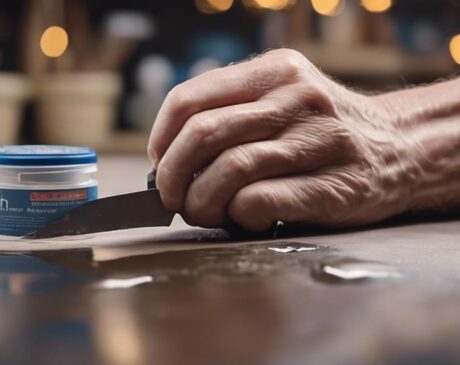What Happens if I File My Nail Too Thin?
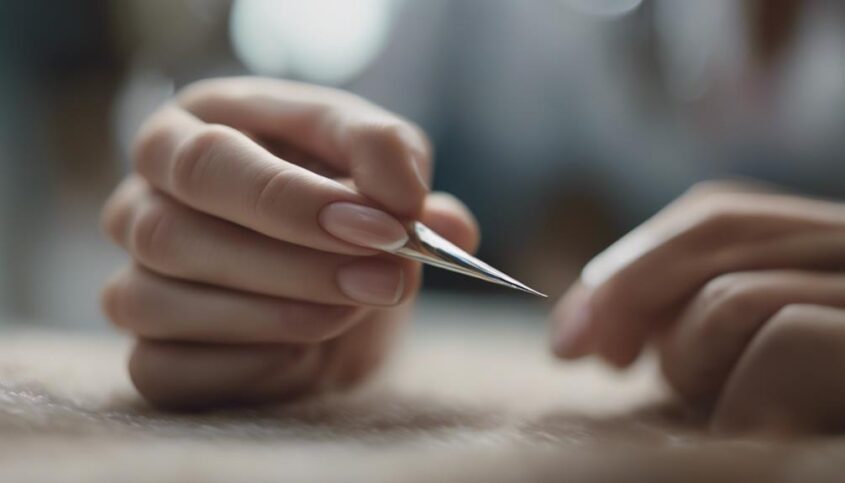
Filing your nails too thin weakens their structure, making them prone to breakage and susceptible to various nail issues. This can lead to discomfort and longer recovery times. It's crucial to understand the risks involved in over-filing to maintain healthy nails. Seek balance between thickness and strength and consider using strengthening base coats or moisturizing treatments. If you want to know more about the effects of filing nails too thin, there are additional details on nail thinning processes, nail bed exposure risks, increased sensitivity, and tips for nail recovery waiting ahead.
Key Takeaways
- Filing nails too thin weakens them, increasing breakage risk.
- Thin nails are prone to splitting and damage.
- Excessive filing exposes nail bed, leading to infections.
- Sensitivity and discoloration may result from over-filing.
- Delayed growth, vulnerability to infections, and weakened structure are consequences.
Nail Thinning Process
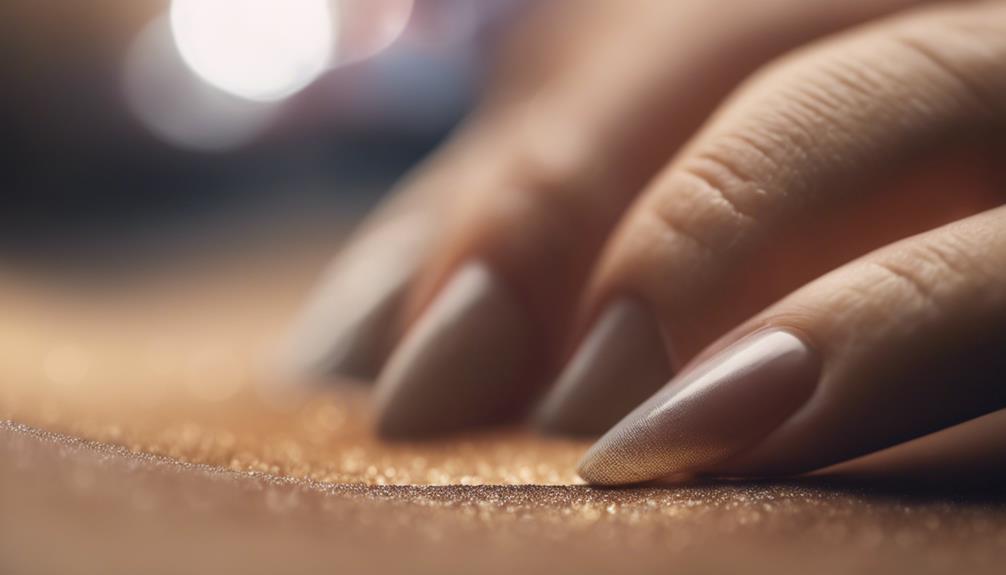
Engaging in the process of thinning nails involves delicately removing layers of the nail plate to achieve the desired thickness. This meticulous procedure requires precision and care to avoid over-thinning, which can weaken the nail structure. Innovations in nail care tools, such as electric nail files or glass nail files, have made the thinning process more efficient and effective. These tools allow for controlled and gradual thinning, ensuring that the nails remain strong and healthy.
Risk of Nail Breakage
When nails are filed too thin, the risk of nail breakage significantly increases. This weakening of the nail structure makes them more vulnerable to damage, ultimately leading to splitting. Understanding these risks is crucial for maintaining healthy and strong nails.
Weakens Nail Structure
Filing the nail too thin can compromise its structure, increasing the risk of nail breakage. When the nail is weakened, it is more prone to splitting, cracking, or peeling. This compromises the overall health and appearance of the nail. To understand better, let's look at how filing too thin weakens the nail structure:
| Weakens Nail Structure | Effects | Solutions |
|---|---|---|
| Thins the nail plate | Increases breakage risk | Use strengthening base coat |
| Damages nail bed | Reduces nail flexibility | Apply moisturizing treatments |
| Weakens nail keratin | Decreases nail resilience | Opt for gentle nail care routine |
Maintaining a balance between nail thickness and strength is key to preventing nail breakage and ensuring healthy nails.
Increased Vulnerability to Damage
Neglecting to maintain an optimal nail thickness can render the nail more susceptible to damage, specifically increasing the likelihood of nail breakage. When nails are filed too thin, they lose their strength and resilience, making them more prone to breaking. This vulnerability to damage can lead to various issues, including:
- Increased risk of nail fractures
- Greater susceptibility to chipping
- Difficulty in maintaining nail length
- Higher chances of nail splitting
- Reduced durability of the nail overall
To prevent such consequences, it is essential to be mindful of the thickness when filing nails, ensuring they maintain a healthy balance between strength and flexibility.
Prone to Splitting
Maintaining an optimal nail thickness is crucial to prevent nails from becoming prone to splitting, leading to an increased risk of nail breakage. When nails are filed too thin, they lose their structural integrity, becoming more susceptible to splitting along the nail bed. This can result in painful tears that not only affect the appearance of the nail but also increase the likelihood of further breakage. To counter this, individuals can explore innovative solutions such as using strengthening polishes or supplements containing biotin to promote nail health and resilience. Additionally, adopting proper nail care practices, such as moisturizing cuticles and avoiding harsh chemicals, can help maintain the nail's thickness and reduce the risk of splitting and breakage.
Exposing Nail Bed
When the nail bed becomes exposed due to over-filing, it is essential to promptly seek proper care to prevent potential complications. Exposing the nail bed can lead to discomfort and increase the risk of infection. Here are some key points to consider:
- Risk of Infection: Exposing the nail bed creates a pathway for bacteria and fungi to enter, increasing the risk of infection.
- Pain and Sensitivity: The exposed nail bed can be painful and sensitive to touch, making daily activities uncomfortable.
- Delayed Healing: Without proper care, the exposed nail bed may take longer to heal, prolonging discomfort and vulnerability.
- Nail Regrowth Challenges: Excessive filing that exposes the nail bed can affect the regrowth process, leading to irregular nail formation.
- Professional Intervention: Seeking help from a healthcare provider or a nail specialist is crucial to assess the damage and receive appropriate treatment to promote healing and prevent complications.
Increased Sensitivity
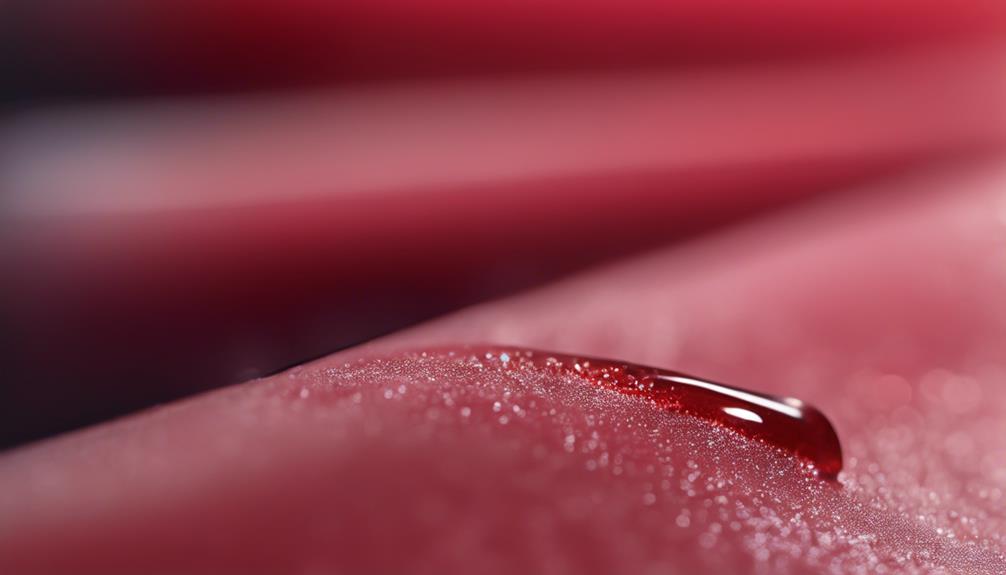
Exposing the nail bed through over-filing can result in heightened sensitivity, requiring careful attention to prevent discomfort and potential complications. Increased sensitivity in the nail can manifest as pain or discomfort when pressure is applied, or even when exposed to mild temperatures. This heightened sensitivity is a sign that the protective layers of the nail have been compromised, leaving the nerve endings more exposed and vulnerable. To address this issue, it is crucial to provide gentle care to the affected nail, avoiding further trauma or pressure. Moisturizing the nail bed and surrounding skin can help alleviate discomfort and promote healing. Additionally, protecting the sensitive nail from harsh chemicals and excessive moisture is vital to prevent further irritation. If sensitivity persists or worsens, seeking advice from a healthcare professional or a nail care specialist is recommended to assess the situation and determine the best course of action to promote recovery.
Nail Discoloration
Nail discoloration can manifest in various ways, such as a yellowed appearance or the development of white spots on the nails. These changes in nail color can be indicative of underlying issues that may have been triggered by filing the nail too thin. Understanding the causes and potential solutions for nail discoloration is essential for maintaining overall nail health and appearance.
Yellowed Nail Appearance
A common consequence of filing the nail too thin is the development of a yellowed appearance, indicating nail discoloration. This discoloration can be concerning for individuals seeking healthy-looking nails. Here are some key points to consider:
- Causes: Chemical exposure or fungal infections can lead to yellowing.
- Prevention: Proper nail care techniques can help prevent discoloration.
- Treatment: Antifungal medication or nail brightening products may help.
- Consultation: Seek advice from a dermatologist for persistent discoloration.
- Innovation: New technologies like laser treatment are being explored for nail discoloration.
White Spots on Nails
One common indicator of nail discoloration that individuals may observe are the presence of white spots on the nails. These white spots, also known as leukonychia, can be caused by various factors such as minor injuries to the nail matrix, fungal infections, or nutrient deficiencies. While white spots on nails are usually harmless, they can sometimes indicate underlying health issues that may require medical attention. To promote healthy nail growth and prevent white spots, maintaining a balanced diet rich in essential nutrients like biotin, vitamin E, and zinc is crucial. Additionally, practicing good nail hygiene, avoiding harsh chemicals, and protecting nails from trauma can help prevent the development of white spots and ensure overall nail health.
Prone to Infections
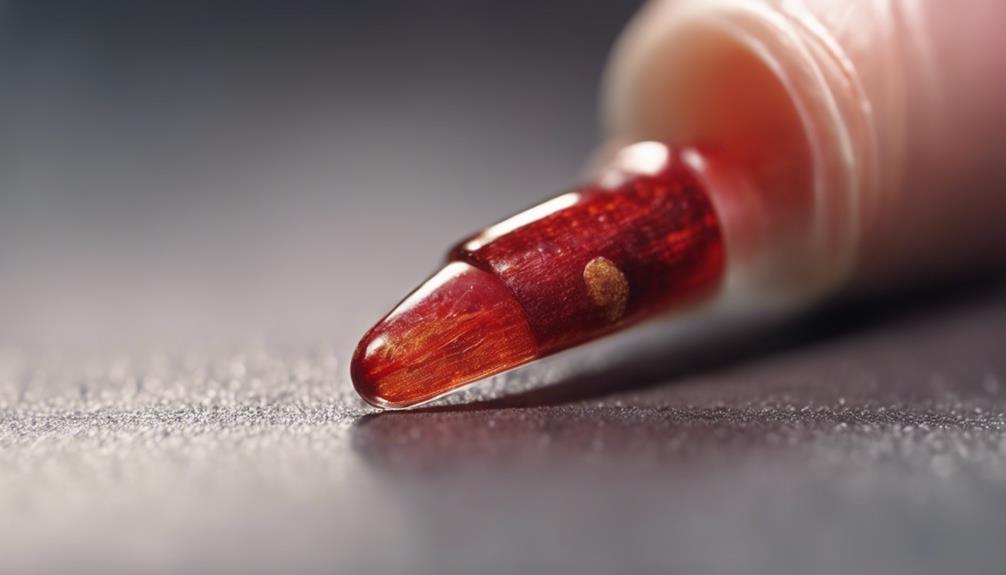
When filing your nail too thin, you may inadvertently create a vulnerability that increases the risk of developing infections. The natural protective barrier of the nail is compromised, allowing bacteria and fungi to enter more easily, leading to various infections. Here are some reasons why nails filed too thin are prone to infections:
- Exposure to Microorganisms: Thinning the nail exposes the delicate nail bed to harmful microorganisms.
- Moisture Retention: Thin nails are less able to retain moisture, making them more susceptible to drying out and cracking, providing entry points for infections.
- Weakened Structure: A thin nail lacks the structural integrity to defend against external pathogens effectively.
- Slow Healing: Infections on thin nails may take longer to heal due to the compromised nature of the nail.
- Increased Sensitivity: Thinning the nail can lead to increased sensitivity, making it more prone to irritation and potential infection.
Keeping nails at an appropriate thickness can help maintain their strength and protect against infections.
Delayed Nail Growth
Experiencing a delay in nail growth can be a common concern for individuals who have filed their nails too thin. When nails are filed excessively, the protective layers can be compromised, leading to a slowdown in the natural growth process. This delay in nail growth can be frustrating for those seeking long, healthy nails.
Several factors contribute to delayed nail growth following over-filing. Firstly, the nail matrix, responsible for producing new nail cells, may have been disrupted or damaged during the filing process. This disturbance can impede the proper formation and growth of new nails. Additionally, inadequate blood flow to the nail bed, caused by excessive filing, can further hinder the growth and health of the nails.
To address delayed nail growth effectively, it is crucial to allow the nails time to recover and regenerate. Patience is key, as nails can take several weeks to months to fully grow back to their original length. In the next section, we will explore practical tips to aid in the recovery and promote healthy nail growth.
Tips for Nail Recovery
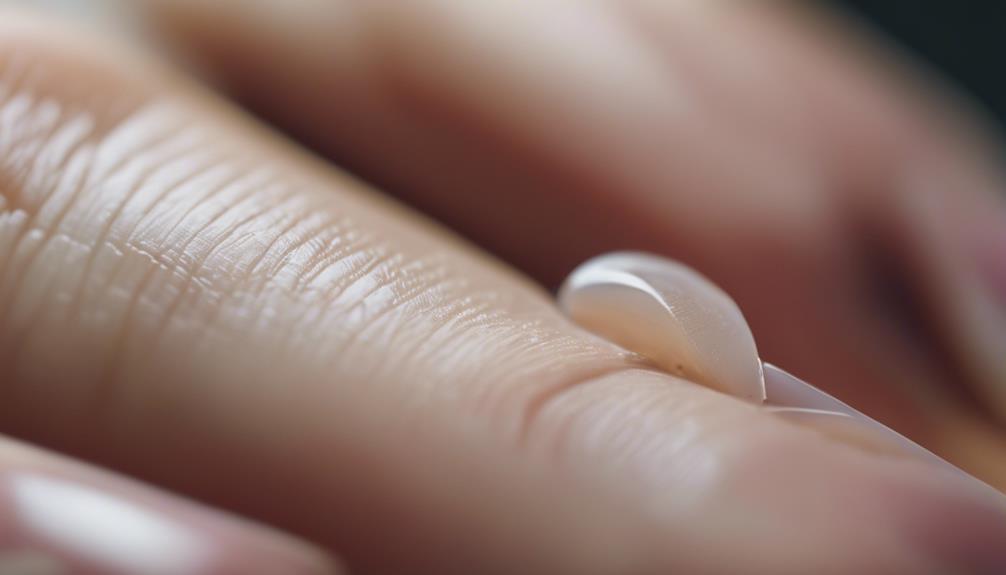
Following over-filing of nails, it is imperative to adopt specific strategies to facilitate nail recovery and promote healthy growth. To aid in the restoration process, consider the following innovative tips:
- Moisturize Regularly: Hydrating the nails and cuticles with nourishing oils or creams can help restore moisture lost during filing.
- Use Nail Strengtheners: Applying a quality nail strengthener can aid in fortifying the nails, preventing breakage, and promoting growth.
- Consume Nail-Boosting Nutrients: Ensure your diet includes nutrients like biotin, iron, and vitamins A and C to support nail health from the inside out.
- Avoid Harsh Chemicals: Minimize exposure to chemicals found in nail polish removers and cleaning agents that can further weaken the nails.
- Trim and Shape Carefully: When nails start to recover, trim them regularly to maintain a healthy length and shape, preventing future damage.
Frequently Asked Questions
Can Filing My Nails Too Thin Permanently Damage Them?
Filing nails too thin can lead to weakening and potential damage, impacting nail health. Continuous thinning may result in increased susceptibility to breakage and other issues. Regular maintenance, proper techniques, and moisturizing can help prevent long-term harm.
How Long Does It Typically Take for a Nail to Recover After Being Filed Too Thin?
Recovery time for over-filed nails varies based on individual factors. Typically, it can take weeks to months for a nail to fully regenerate. Proper care, hydration, and nutrients can expedite the process, promoting healthy nail growth.
Are There Any Specific Products or Treatments That Can Help With Nail Recovery?
In the realm of nail recovery, various products and treatments can aid in restoring nail health. From strengthening serums to nourishing oils, the market offers innovative solutions that can promote the rejuvenation of nails post-damage.
Will Filing My Nails Too Thin Affect the Strength of My Nails in the Long Term?
Filing nails too thin can weaken them over time, leading to increased fragility and susceptibility to breakage. This can be mitigated by incorporating strengthening treatments and ensuring proper hydration and nutrition for healthy nail growth.
Are There Any Warning Signs to Look Out for That Indicate My Nails Are Being Filed Too Thin?
When filing nails too thin, watch for signs like increased sensitivity, pain, or a translucent appearance. Maintaining a healthy nail thickness is crucial for strength and preventing damage. Seek professional advice if unsure about nail filing techniques.


